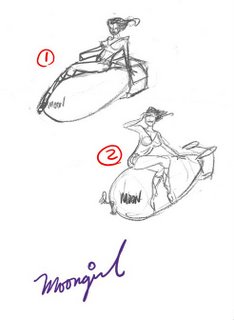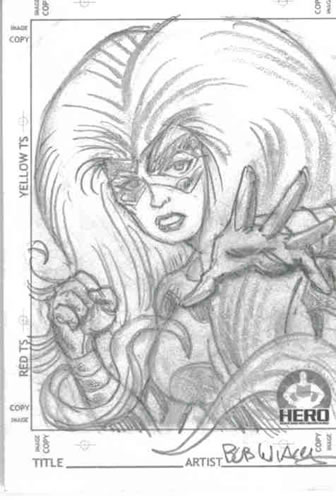Don't tell Number Two, but Number Six has escaped.
Permanently.
Patrick McGoohan, a hero to a generation of genre TV cultists as the star of the classic espionage series
Danger Man (retitled
Secret Agent for American broadcast on CBS) and its even more famous "sequel"
The Prisoner, has died at the age of 80.
For those of you who missed the 1960s,
The Prisoner starred McGoohan (who cocreated the show with producer George Markstein) as a spy who, after submitting his resignation, is kidnapped and transported to an isolated seaside community known only as The Village. The protagonist, whose real name is never divulged, is referred to as Number Six. (Most fans suppose Number Six to be John Drake, the hero of
Danger Man, even though McGoohan consistently denied this — most likely because someone else owned the rights to the earlier character.) Indeed, all residents of The Village are known only by numeric designations, including the sinister head honcho, Number Two (played by a different actor in almost every episode).
The 17-episode series revolves around Number Six's ongoing efforts to either escape — efforts often thwarted by an enormous, seemingly sentient balloon called Rover — or subvert Number Two's authority and control of The Village, or both. Number Two, in turn, engages in a constant stream of cat-and-mouse mind games, trying to learn why Number Six resigned his post (and, by implication, for whom Six might have been working).
In a memorable two-part finale, Number Six finally manages to break free of The Village's confines.
Or does he?I'm a member of that hardcore band of pop culture geeks who maintain that
The Prisoner is one of the greatest series ever created for television. It's smartly written, thought-provoking, and can be interpreted in a variety of ways, depending upon one's political perspective and psychosocial worldview. Its 17 episodes span a broad range of genres — mystery, action-suspense, comic satire, even Western (the episode "Living in Harmony").
Thanks in large part to McGoohan's rigid control, the show maintained a high quality level, even though it ran longer than McGoohan originally proposed. (CBS insisted on 17 episodes, to ensure an afterlife in syndication — McGoohan conceived the show as a seven-episode cycle.)
The Prisoner frequently explored themes that were considered controversial for the time: conspiracy theories, government mind control, propaganda, psychedelic drugs, anti-authority rebellion, and anti-war sentiment.
When I was studying broadcast communications at San Francisco State University, I took a course in semiotics — the study of symbols and signs as facets of the communication process — taught by one of the world's leading experts in the field, Dr. Arthur Asa Berger. Episodes of
The Prisoner were among Dr. Berger's favorite teaching tools.
Ironically, Patrick McGoohan's passing comes shortly before the debut of a modernized retelling of
The Prisoner, which airs later this year on American Movie Classics. The new Prisoner stars Jim Caviezel as Number Six, and Ian McKellen as his adversary, Number Two.
McGoohan continued to be much sought after as a character actor for decades following
The Prisoner. He gained critical acclaim as the villainous King Edward, a.k.a. Longshanks, in Mel Gibson's
Braveheart, and as the father of Billy Zane's jungle superhero in
The Phantom. My favorites among his post-
Prisoner roles were his frequent turns as perpetrator on
Columbo (McGoohan won two Emmy Awards for his
Columbo appearances, several of which he also directed), and his starring turn in the short-lived 1970s medical series
Rafferty, which foreshadowed
House by about 25 years.
Despite his impressive body of work, McGoohan will always be Number Six in my imagination.
"I am not a number — I am a free man!"Labels: Celebritiana, Dead People Got No Reason to Live, Reminiscing, Ripped From the Headlines, Teleholics Anonymous
















